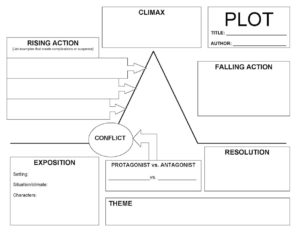Film studies takes various theoretical, historical, and critical approaches to films by exploring the narrative, artistic, cultural, economic, and political implications of the cinema. This lesson will look at the ways film studies can take a critical approach that analyzes how production, theoretical framework, context, and creation embed messages and meanings in cinema.
Lesson Objectives
- identify the relationship between film and culture
- describe how filmmakers communicate ideas, messages and meanings to viewers through the screen
- interpret messages and meanings embedded in film through analysis.
There are three fundamental approaches to Film Studies known as the ‘three Cs”: critical, creative, and cultural. The three Cs provide a framework for approaching film studies in the Humanities.
Critical Film Studies
Critical Film Studies aims to understand and explore films of all variety and to question the ways film can affect, move, challenge and confront people. It involves an awareness of other art forms which affect, influence and enhance the enjoyment that we experience in viewing a film. Through critical analysis, the viewer can consider how films present arguments and viewpoints on the world. Analytical approaches ask questions about characters and narrative, issues relating to themes and values, and about the aesthetic aspects of film. The analyst identifies the elements of film, sometimes through repeated viewings, to consider the intention of the filmmaker. In critical analysis the analyst also positions the film in relation to their own personal experiences, and this reveals the subjective lens in which the audience experiences the film. This places the audience as a participant in film by playing the viewer role, and the experiences of film watching are mediated through the viewers personal perspective.
Creative Film Studies
Creative film studies involves filmmaking through investigative, analytical, experimental, practical, technical and expressive skills to develop an understanding of the inter-relationships between the moving image and other art forms, disciplines and practices. Filmmaking requires knowledge and understanding of the place of film in contemporary society; and an awareness of the context in which film production and reception takes place. Through creativity, filmmakers experiment with new digital technologies and the creative learning possibilities to communicate messages and meanings in a variety of ways. Creative filmmaking provides avenues for self-expression and independence in the exploration of thoughts, ideas and creative practices.
Cultural Film Studies
Cultural Film Analysis helps us develop an understanding of ourselves, our
cultural and national identities, and historical experiences. Cultural analysis also enables people to understand other cultures, times, ideas and values. Analysis looks into the ways films ‘speak’ to the audience in the form of influence, quotation, and allusion is an important dimension of film culture.
We looked at Black Swan in the previous weblesson on Dance. Lets look at Black Swan from a film studies perspective.
As the narrator describes in the analysis, the film portrays a salient theme in cinema; how far will a person go to satiate an addition. In this case, it is the character’s drive to be the Black Swan. Consider the ways that the film makers represents the characters dehumanization from an innocent child-like character to an individual that is willing to do and become whatever it takes to become a ‘Black Swan.’ Consider the symbols and metaphors used in the film; actions, relationships, scenes, etc. What is the film-maker saying about people and humanity? Is the story of the Black Swan a metaphor for life?
Film Analysis
Analyzing film is a means of extracting messages and meanings from the screen. Analysis places an emphasis on time period, the culture in which the film was produced, the genre the film belongs, and the creators of the film. This type of analysis aims to deconstruct the lens in which the film was created. Analysis consider a film like a “text” that relies on visual imagery to tell specific stories or present a specific ideologies. Yet film stories are not static like text, because it is more complex with various layers; plot, character, them etc but also lighting, cinematography, etc. Therefore, analyzing a film requires you to take a careful look at the setting, plot, characters, dialogue, symbols, metaphors, archetypes, etc., as well as those factors that have an influence on the film, such as the social, historical, and political context in which the film was created.
For discussion, you will choose a film to analyze, and follow these steps to conduct your own analysis:
- Identify the film’s genre and sub-genre: Visit AMC filmsite to review a list of genres and sub-genres.
- Watch the film once to get a general feel, and then watch it a second time for analysis.
- Identify a single thematic concept or message related to the film. Consider how the film is photographed. Does the film relate to an historical event (ie a battle in World War II) or a common experience among humans (ie heartbreak, bravery, etc.) ? Is there a single scene in the film, dialogue or situation that relates to or epitomizes a larger idea?
- Investigate the participants in the film; producer, actors, cinematographer, costume designer, etc. that is relevant to your focus. Who are they and what role did they play in influencing the film?
- Provide a brief overview of the storyline. Avoid an extensive play by play description, and go into greater detail about the overall plot, message, and ending.
- Interrogate techniques used to convey emotional meanings such as symbolism, irony, humor, sarcasm, etc.
- Provide your overall evaluation of the film that is not based on its entertainment effect but on its success is achieving its message.
The quick video below produced by a film studies student provides a handy guide to analysis.
If you are really into film and philosophy, watch this video presenting famous Slovenian philosopher Slavoj Zizek on cultural film analysis.
References and Resources
To learn more about film and film analysis, visit the links below
- A Framework for Film Education
- How to Analyze a Movie – San Diego Film Festival
- Pixar in a Box, Khan Academy
- African Cinema in HUM2420 African Humanities at Santa Fe College
For Discussion in Canvas
Select a film and conduct a brief (50-100 word) analysis using the terms and concepts presented in this lesson (place them in bold and italics to show you used them.) Be sure to read and respond to at least two other student posts.
Resources for Foreign Online Films:
- Sundance Now (free trial)
- 40 best foreign films on Netflix
- Best foreign movies on hulu (free trial available)
- Criterion Collection – Filmstruck (free trial)
For Your Creative Journal
Select a movie genre and develop your own idea for a movie. You can do this alone, or in a group. (This is a great opportunity to recruit your friends.) In your journal, write a script for a short ‘flash’ film (five min or less or a single scene in an imaginary film.) Upload a video of the flash film or scene to the discussion accompanied with a brief (approx 50-100 word) description of the film and use the elements of fiction; what is the film about, what is the time, setting, characters, etc.), and include the meaning behind the setting, soundtrack, angle, coloration of the film (black and white, retro vintage, etc.)
*If the thought of acting in front of a camera feels mortifying, consider alternatives such as voice-overs, pets, inanimate objects, computer generation, etc.
Flash Film Examples
Pixar’s ‘Piper’ is a short computer generated film that relies on music and imagery to tell a story with a lesson.
‘COVID Street Deal’ is a short (less than one-minute) and humorous commentary on the toilet paper shortage during the initial stages of the COVID19 lockdown in 2020.
Animal Voice-overs are another way to express levity while staying behind the camera. View the film below for examples.


